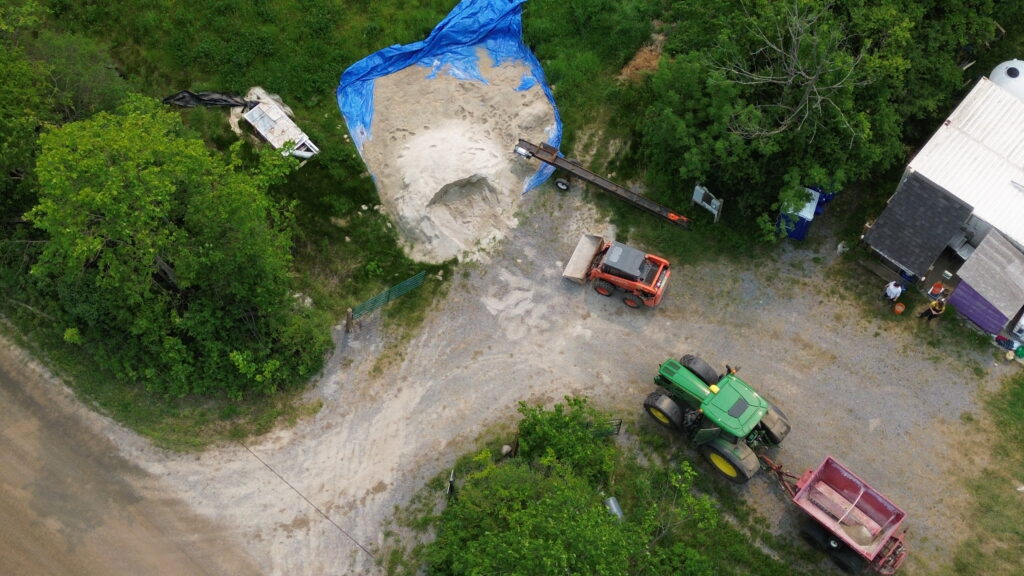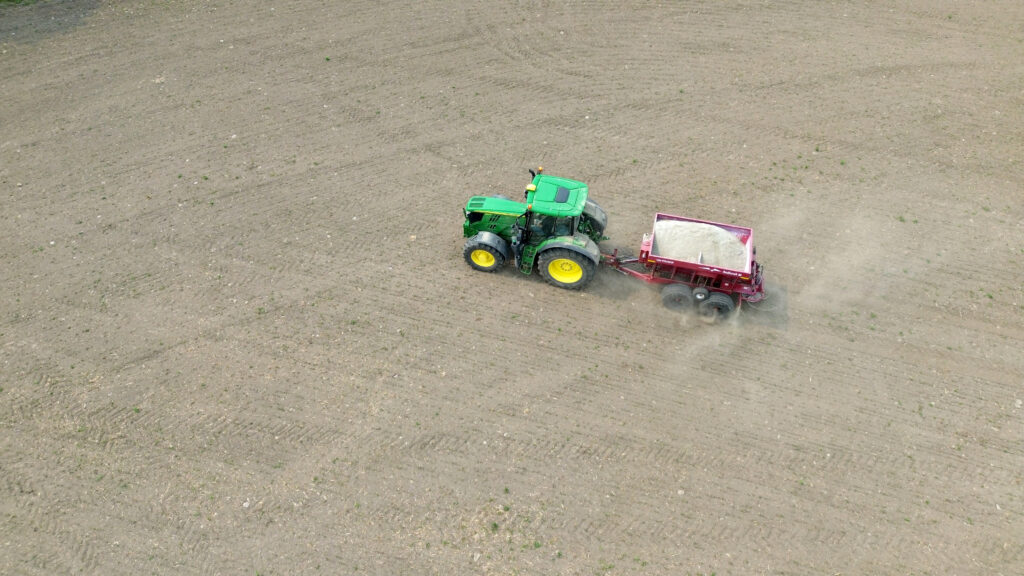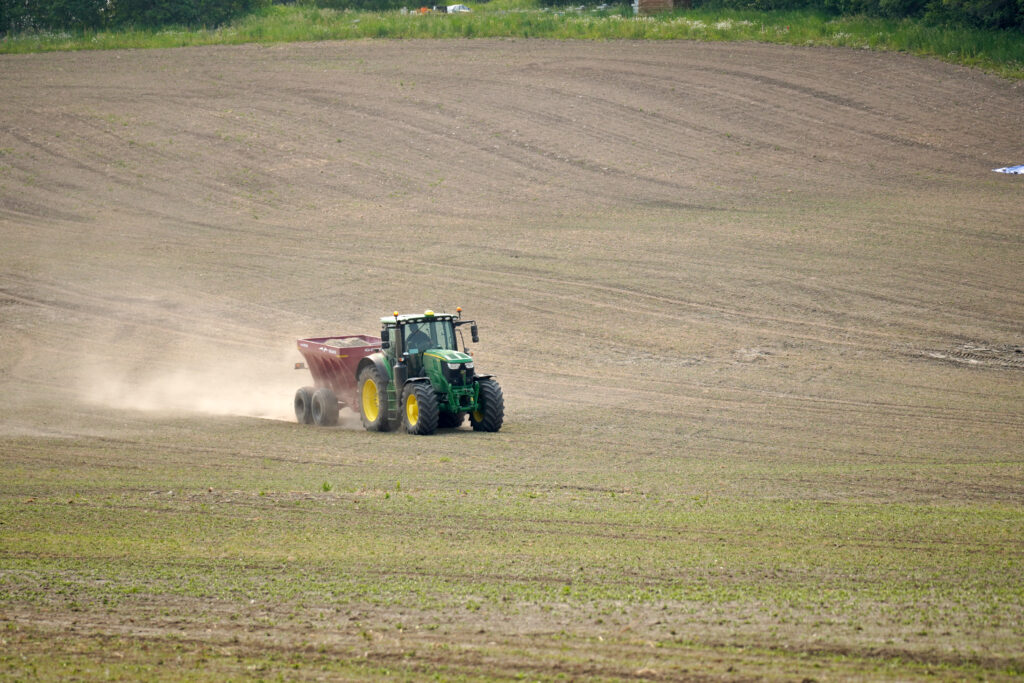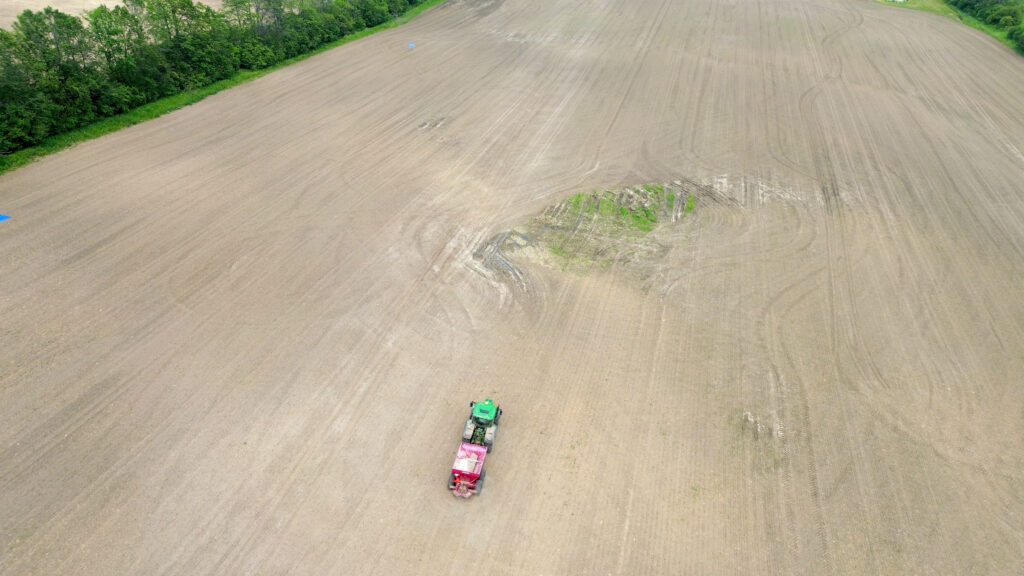Carbon capture in real-time
Our latest R & D partnership with Yale and Trent University is hitting the ground running. Last week wollastonite was spread on 10 acres of soybean fields at 3 mt/acre, with a 2.5-acre kept as a control plot. Then scientific equipment was set up to collect soil water for analysis and measure soil moisture, nutrient levels, and temperature at 15 and 30-cm depths. Each week, the research team will use Licor sensors to measure real-time CO2 gas exchange between the soil and atmosphere. This is a unique study comparing CO2 gas exchange in soil with and without wollastonite.
For the projects we’ve partnered on to date, we’ve looked exclusively at the formation of carbonates in the soil. Previous research shows that carbon capture happens quickly, especially with a legume crop that releases organic acids from its roots. These acids form carbonates that percolate deep into the soil, storing the carbon for thousands of years. This research project is looking to uncover more details about the conditions needed to optimize CO2 capture. Does all the fixed carbon come through organic acids? Do soil organisms have a role to play as well? How might soil nutrient or moisture levels influence carbon capture?
That is called a cliffhanger in the world of Enhanced Rock Weathering (one of the most promising shovel-ready solutions to capturing a lot of carbon quickly).
Stay tuned.
Here are photos from the project:




